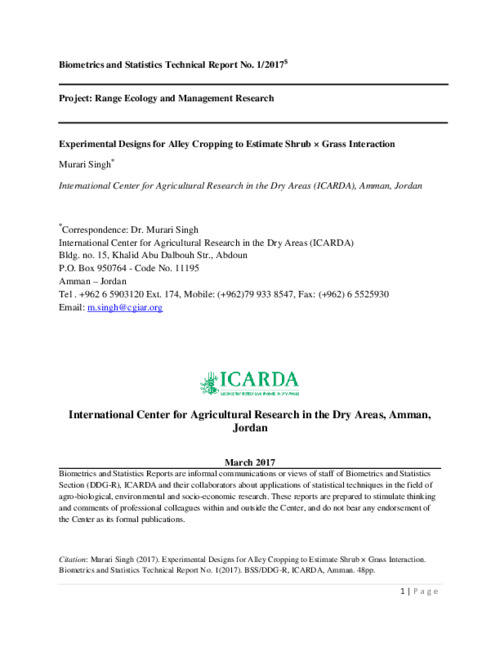Experimental Designs for Alley Cropping to Estimate Shrub x Grass Interaction
Abstract
Alley cropping, an agroforestry system, comprises rows of perennial shrubs or trees bordering 
the alleys of grasses/crops. An appropriately chosen alley cropping provides improvement in 
feeds for small ruminants, food for human consumption, and contributes to economic and 
environmental sustainability. Rangeland and forage development studies aim at evaluation of 
interference of shrubs such as saltbush Atriplex, with the grasses or fodder/forage crops such as 
vetch/barley. In such studies a number purposely selected species of shrubs and grasses are 
evaluated under an alley cropping. This presentation discusses a number of experimental designs 
and statistical models for analysis of responses on the grasses/crops in the alleys. The 
experimental designs considered are the complete block with or without split-plot frames for the 
border and alley experimental units. The treatment designs include a factorial structure of shrub
borders and grasses. The shrub-borders considered are of self-types, i.e. same shrub on both sides 
of the alley, and partial diallel-type, i.e., different shrubs on the borders. The linear models 
consisting of shrubs effects, grasses effects and their interaction with different structures are 
considered with parameters defined for shrub × grass interaction. A statistical analysis of the 
alley- responses has been illustrated with a simulated dataset. 
 
Key words: Alley cropping, Shrub and Grass Effects and Interaction, Self and Diallel Designs, Blocks, Split-plots

